Cover
Cognition, brain, and consciousness
Copyright page
Contents
Preface
Chapter 1 Mind and brain
1.0 Introduction
2.0 An invitation to mind-brain science
3.0 Some starting points
3.1 Distance: seven orders of magnitude
3.2 Time: ten orders of magnitude
3.3 The need to make inferences – going beyond the raw observations
3.4 The importance of convergent measures
3.5 Major landmarks of the brain
4.0 Some history, and ongoing debates
4.1 The mind and the brain
4.2 Biology shapes cognition and emotion
4.3 Cajal's neuron doctrine: the working assumption of brain science
4.4 Pierre-Paul Broca and the localization of speech production
4.5 The conscious and unconscious mind
5.0 The return of consciousness in the sciences
5.1 How conscious and unconscious brain events are studied today
5.2 History hasn't stopped
6.0 Summary
7.0 End of chapter exercises
7.1 Study questions
7.2 Drawing exercise
Chapter 2 A framework
1.0 Introduction
2.0 Classical working memory
2.1 The 'inner senses'
2.2 Output functions
2.3 Only a fleeting moment...
2.4 Understanding Clive Wearing in the functional framework
2.5 The importance of immediate memory
3.0 Limited and large-capacity functions
3.1 Dual task limits
3.2 Some very large brain capacities
3.3 Why are there such narrow capacity limits?
3.4 Measuring working memory
4.0 The inner and outer senses
4.1 The mind's eye, ear, and voice
4.2 The imagery sketchpad may use visual regions of cortex
4.3 Is inner speech like outer speech?
4.4 Is there only one working memory?
5.0 The central executive
5.1 Executive effort and automaticity
5.2 Executive and spontaneous attention
6.0 Action
7.0 Consolidation of short-term events into long-term memory
7.1 Is working memory just re-activated permanent memory?
8.0 Summary
9.0 Study questions and drawing practice
9.1 Study questions
9.2 Drawing exercises
Chapter 3 Neurons and their connections
1.0 Introduction
1.1 Real and idealized neurons
1.2 Excitation and inhibition
1.3 Neural computation
2.0 Working assumptions
2.1 Starting simple: receptors, pathways, and circuits
3.0 Arrays and maps
3.1 Maps flow into other maps
3.2 Neuronal arrays usually have two-way connections
3.3 Sensory and motor systems work together
3.4 Temporal codes: spiking patterns and brain rhythms
3.5 Choice-points in the flow of information
3.6 Top-down or expectation-driven processing
4.0 How neural arrays adapt and learn
4.1 Hebbian learning: 'Neurons that fire together, wire together'
4.2 Neural Darwinism: survival of the fittest cells and synapses
4.3 Symbolic processing and neural nets
5.0 Coordinating neural nets
5.1 Functional redundancy
6.0 Summary
7.0 Study questions and drawing exercises
7.1 Study questions
7.2 Drawing exercises
Chapter 4 The tools: Imaging the living brain
1.0 Introduction
1.1 Brain recording: more and less direct measurements
1.2 The time-space tradeoff
2.0 A range of useful tools – measuring electric and magnetic signals
2.1 Single-unit recording
2.2 Animal and human studies cast light on each other
2.3 Electroencephalography (EEG)
2.4 Magnetoencephalography (MEG)
2.5 Zapping the brain
3.0 Functional neuroimaging: a bold new world
3.1 Regions of interest
3.2 The resting brain is not silent: intrinsic brain processes
3.3 Empirically defining cognitive functions: the creative key
4.0 New ways to measure brain connectivity: diffusion tensor imaging
5.0 Conscious versus unconscious brain events
6.0 Correlation and causation
6.1 Why we need multiple tests of brain function
6.2 Brain damage and causal inferences
7.0 Summary
8.0 Chapter review
8.1 Drawing exercises and study questions
Chapter 5 The brain
1.0 Introduction
1.1 The nervous system
1.2 The geography of the brain
2.0 Growing a brain from the bottom up
2.1 Evolution and personal history are expressed in the brain
2.2 Building a brain from bottom to top
3.0 From 'where' to 'what': the functional roles of brain regions
3.1 The cerebral hemispheres: the left-right division
3.2 Output and input: the front-back division
3.3 The major lobes: visible and hidden
3.4 The massive interconnectivity of the cortex and thalamus
3.5 The satellites of the subcortex
4.0 Summary
5.0 Chapter review
5.1 Study questions
5.2 Drawing exercises
Chapter 6 Vision
1.0 Introduction
1.1 The mystery of visual experience
1.2 The purpose of vision: knowing what is where
1.3 Knowing what: perceiving features, groups, and objects
1.4 Knowing where things are
2.0 Functional organization of the visual system
2.1 The retina
2.2 Lateral geniculate nucleus (LGN)
2.3 Primary – or striate – visual cortex (V1)
2.4 Extrastriate visual areas – outside of V1
2.5 Area MT
2.6 The ventral and dorsal pathways: knowing what and where
2.7 Areas involved in object recognition
2.8 Lateral occipital complex (LOC)
2.9 Fusiform face area (FFA)
2.10 Parahippocampal place area (PPA)
3.0 Theories of visual consciousness: where does it happen?
3.1 Hierarchical and interactive theories of vision
4.0 Brain areas necessary for visual awareness: lesion studies
4.1 Consequences of damage to early visual areas
4.2 Extrastriate lesions – damage outside area V1
4.3 Damage to ventral object areas
4.4 Damage to dorsal parietal areas
5.0 Linking brain activity and visual experience
5.1 Multistable perception
5.2 Binocular rivalry: what you see is what you get activated
5.3 Visual detection: did you see it?
5.4 Constructive perception: more to vision than meets the eye...
5.5 Neural correlates of object recognition
6.0 Manipulations of visual awareness
6.1 Transcranial magnetic stimulation
6.2 Unconscious perception
7.0 Summary
8.0 Study questions and drawing exercises
Chapter 7 Hearing and speech
1.0 Introduction
1.1 A model for sound processing
1.2 Sound and hearing basics
2.0 The central auditory system
2.1 Auditory pathways
2.2 Auditory cortex
3.0 Functional mapping of auditory processing
3.1 Primary auditory cortex
3.2 The role of the planum temporale in sound decoding
3.3 Cortical auditory 'what' and 'where' systems
4.0 Speech perception
4.1 Background and history
4.2 Early theories of speech perception
4.3 Functional mapping of speech-specific processes
4.4 The link between speech perception and production
4.5 Damage to speech perceptual systems
4.6 A working model for speech perception in the brain
5.0 Music perception
5.1 Stages of music processing
5.2 A separate system for music perception?
6.0 Learning and plasticity
6.1 Plasticity due to deprivation
6.2 Plasticity due to learning
6.3 Plasticity due to expertise
7.0 Auditory awareness and imagery
7.1 Auditory awareness during sleep and sedation
7.2 Auditory imagery
8.0 Summary
9.0 Chapter review
9.1 Study questions
9.2 Drawing exercise
9.3 Exploring more
Chapter 8 Consciousness and attention
1.0 Introduction
1.1 Waking cognition is consciously mediated
1.2 The need for timely waking, sleep, and dreaming
1.3 Global rhythms of circadian states
1.4 States of consciousness have characteristic thalamocortical activity
1.5 The thalamocortical core: massively interlinked and very active
1.6 Maps and rhythms
1.7 Two-way connections
1.8 How neurons synchronize
1.9 Synchrony for gain control
2.0 Waking
2.1 Realistic thinking
2.2 Orientation to place, time, and persons
2.3 Waking is for learning; sleep enables memory consolidation
2.4 Attention and consciousness commonly enable learning
2.5 Losing consciousness of predictable routines
2.6 Implicit learning requires consciousness, too
2.7 Fast rhythms coordinate waking tasks
2.8 Gamma activity has multiple roles
2.9 Gamma synchrony may bind visual features into conscious objects
2.10 Theta rhythms have multiple roles
2.11 Alpha rhythms
3.0 Attention enhances perception, cognition, and learning
3.1 The Posner flanker task
3.2 A model of attention
3.3 Attention versus conscious experiences
4.0 REM dreams
4.1 Dreaming as a conscious state
4.2 Memory consolidation in REM
5.0 Deep sleep: ups and downs
5.1 Some mental activity occurs even in slow-wave sleep
5.2 The arousal threshold changes during sleep
5.3 Memory replay and consolidation
6.0 Putting it all together
6.1 Does consciousness reflect a global workspace function in the brain?
6.2 Reentrant signaling and complexity in conscious brain events
6.3 Does consciousness require an experiencing self?
6.4 Why are conscious events reportable?
6.5 Evidence for unusual states
7.0 Summary
8.0 Study questions
Chapter 9 Learning and memory
1.0 Introduction
1.1 A functional overview
1.2 Learning and memory in the functional framework
1.3 Implicit and explicit memory
2.0 Amnesia
2.1 HM: the best-studied amnesia patient
2.2 A summary of amnesia
2.3 Spared functions in amnesia: implicit and procedural memory
2.4 Spared implicit learning
3.0 Memories are made of this
3.1 Electrically evoked autobiographical memories
3.2 Long-term potentiation and long-term depression: excitatory and inhibitory memory traces
3.3 Consolidation: from temporary to permanent storage
3.4 Rapid consolidation: synaptic mechanisms, gene transcription, and protein synthesis
3.5 System consolidation: interaction between the medial temporal lobes and neocortex
4.0 Varieties of memory
4.1 Episodic and semantic memory: 'remembering' versus 'knowing'
4.2 Episodic memories may turn into semantic memories over time
4.3 Episodic and semantic memory are often combined
5.0 MTL in explicit learning and memory
5.1 Divided attention interferes with learning
6.0 Prefrontal cortex, consciousness, and working memory
6.1 Working with memory: the frontal lobe works purposefully with memory
6.2 Prefrontal cortex in explicit (conscious) and implicit (unconscious) learning and memory
6.3 Different types of working memory
6.4 Prefrontal cortex – storage or process control?
6.5 Combining prefrontal and MTL regions for working memory
7.0 Retrieval and metacognition
7.1 False retrieval
7.2 Hemispheric lateralization in retrieval
7.3 Theta rhythms may coordinate memory retrieval
8.0 Other kinds of learning
9.0 Summary
10.0 Drawings and study questions
Chapter 10 Thinking and problem solving
1.0 Working memory
1.1 Working memory overlaps with attention, conscious events, and episodic recall
2.0 Explicit problem solving
2.1 Executive control in problem solving
3.0 Mental workload and cortical activity
4.0 Using existing knowledge
4.1 Practice and training may change connectivities in the brain
4.2 Semantic memory
4.3 Abstract concepts, prototypes, and networks
4.4 Knowledge comes in networks
4.5 Conceptual deficits
4.6 Judgments of quantity and number
5.0 Implicit thinking
5.1 Feelings of knowing
6.0 Summary and conclusions
7.0 Drawings and study questions
Chapter 11 Language
1.0 Introduction
2.0 The nature of language
2.1 Biological aspects
2.2 Language origins
2.3 Speech versus language
3.0 The sounds of spoken language
4.0 Planning and producing speech
5.0 Evolutionary aspects of speaking and listening
6.0 Words and meanings
6.1 A cultural treasury of words and ideas
6.2 Recognizing synonyms
6.3 Current evidence about words and their meanings is fragmentary
7.0 Syntax, nesting, and sequencing
8.0 Prosody and melody
9.0 Meaningful statements
10.0 Unified representations of language
11.0 Summary
12.0 Practice drawings and study questions
Chapter 12 Goals, executive control, and action
1.0 Introduction
1.1 The many and complex frontal lobe functions
1.2 From the silent lobes to the organ of civilization
2.0 Phylogeny and ontogeny
2.1 Phylogeny
2.2 Ontogeny
3.0 Function overview
3.1 'Memory of the future'
3.2 Self-awareness and executive function
4.0 Closer look at frontal lobes
4.1 Neuroanatomy and neurophysiology of the frontal lobes
4.2 How prefrontal cortex is defined
4.3 The vast connective highways of the frontal lobes
5.0 A closer look at frontal lobe function
5.1 Executive functions
5.2 Social maturity and moral development
6.0 Neuroimaging the executive brain
6.1 Attention and perception
6.2 Working memory
6.3 Executive function and motor control
6.4 Decision-making
6.5 Rule adoption
7.0 Frontal lobe dysfunction
7.1 The fragile frontal lobes
7.2 Frontal lobe syndromes
7.3 Frontal lobe damage and asocial behavior
7.4 Other clinical conditions associated with frontal lobe damage
8.0 A current view of organizing principles of the frontal lobes
9.0 Toward a unified theory of executive control: a conclusion
10.0 Drawing exercises and study questions
Chapter 13 Emotion
1.0 Introduction
1.1 The triune brain
1.2 Basic emotions and the role of reflective consciousness
2.0 Panksepp's emotional brain systems
2.1 Feelings of emotion
3.0 The FEAR system
3.1 Conscious and unconscious fear processing: LeDoux's high road and low road
3.2 Fear without awareness
3.3 Affective blindsight
3.4 Cognition-emotion interactions in fear responses
3.5 Implicit emotional learning and memory
3.6 Emotional modulation of explicit memory
3.7 Emotional influences on perception and attention
3.8 Emotion and social behavior
3.9 Emotion inhibition and regulation
4.0 The reward system: liking, wanting, learning
4.1 Re-interpreting 'reward': from reward to reward prediction to reward prediction error
4.2 Reward is more than learning
4.3 'Reward pathway' and drug use
4.4 Reward cues influence attention
5.0 Summary
6.0 Chapter review
6.1 Study questions
6.2 Drawing exercises
Chapter 14 Social cognition: Perceiving the mental states of others
1.0 Overview
1.1 Terms that are used to refer to social cognition
1.2 The importance of perspective: the first, second, and third person
1.3 Approaches to perceiving others' minds
2.0 An organizing framework for social cognition
2.1 Intention
2.2 Eye detection
2.3 Shared attention
2.4 Higher-order theory of mind
3.0 Mirror neurons and intention detection
3.1 From action to intention
3.2 Eye detection and gaze perception
3.3 Shared attention
3.4 Higher-order TOM abilities
3.5 Social cognition of others like and unlike us: I-It in the brain?
3.6 Face perception
4.0 Summary
5.0 Chapter review
5.1 Study questions
5.2 Drawing exercises
Chapter 15 Development
1.0 Introduction
1.1 New techniques for investigating the developing brain
1.2 The mystery of the developing brain: old questions and new
2.0 Prenatal development: from blastocyst to baby
2.1 Epigenesis
2.2 The anatomy of brain development
2.3 Neural migration
2.4 Nature and nurture revisited
2.5 Prenatal hearing experience: voice and music perception before birth
3.0 The developing brain: a lifetime of change
3.1 The rise and fall of postnatal brain development
3.2 Regional differences in brain development
4.0 Developing mind and brain
4.1 The first year of life: an explosion of growth and development
4.2 Childhood and adolescence: dynamic and staged growth
5.0 Early brain damage and developmental plasticity
6.0 Summary
7.0 Chapter review
7.1 Study questions
Chapter 16 The genes and molecules of cognition
1.0 Introduction
1.1 Basic life molecules are also used for neuronal signaling
1.2 Life uses enzymes
1.3 The same molecule may send different signals
1.4 The blood-brain barrier protects the internal milieu of the brain
1.5 Model organisms
2.0 Genes in evolution, the lifespan, and daily events
2.1 DNA operates over multiple time scales
2.2 Brain development: neurogenesis, then synaptogenesis
2.3 How did you get that big brain?
3.0 Gene expression and regulation
3.1 Information processing in the cell
3.2 Higher-order DNA regulates other DNA
3.3 An error in brain development
3.4 Development-controlling genes
3.5 Gene programming: beyond the central dogma
3.6 The environment can restructure chromatin in the cell nucleus
3.7 Learning as an epigenetic process
4.0 Neurons and glia as signaling cells
4.1 Neurons and synapses as on/off switches
4.2 Chemical self-regulation
4.3 Membranes, ion channels, and axonal spikes
5.0 Synaptic transmission: from production to clean-up
5.1 The big two: glutamate and GABA
5.2 GABA: the major inhibitory transmitter
5.3 Neuroglia may also process information
5.4 Production, release, and disposal of neurotransmitters
5.5 Synaptic release
5.6 Synapses and receptors are traffic control points
5.7 Receptors detect signaling molecules
5.8 Ion channels that are opened by other molecules
5.9 Cleaning up the synapse: deactivation, diffusion, recycling
6.0 Neuromodulators
7.0 Learning
7.1 The hippocampal complex
7.2 Glutamate, GABA, LTP, and LTD
7.3 Glutamate synapses as early models of synaptic learning
7.4 Epigenetics of learning
7.5 Neurotrophic factors in learning
8.0 Summary
9.0 Chapter review
Chapter appendix
Appendix: Methods for observing the living brain
1.0 Historical background
1.1 Correlating brain and mind
1.2 Recording brain activation
2.0 Methods
2.1 Electroencephalography (EEG)
2.2 Magnetoencephalography (MEG)
2.3 Positron emission tomography (PET)
2.4 Magnetic resonance imaging (MRI)
2.5 MRI – a tool for the future
2.6 Optical imaging
3.0 Multimodal brain imaging
3.1 Simultaneous imaging from different sources
3.2 Imaging genetics
4.0 Concluding remarks
References
Glossary
A
B
C
D
E
F
G
H
I
J
L
M
N
O
P
R
S
T
U
V
W
Index
A
B
C
D
E
F
G
H
I
J
K
L
M
N
O
P
Q
R
S
T
U
V
W
Z
Color plates

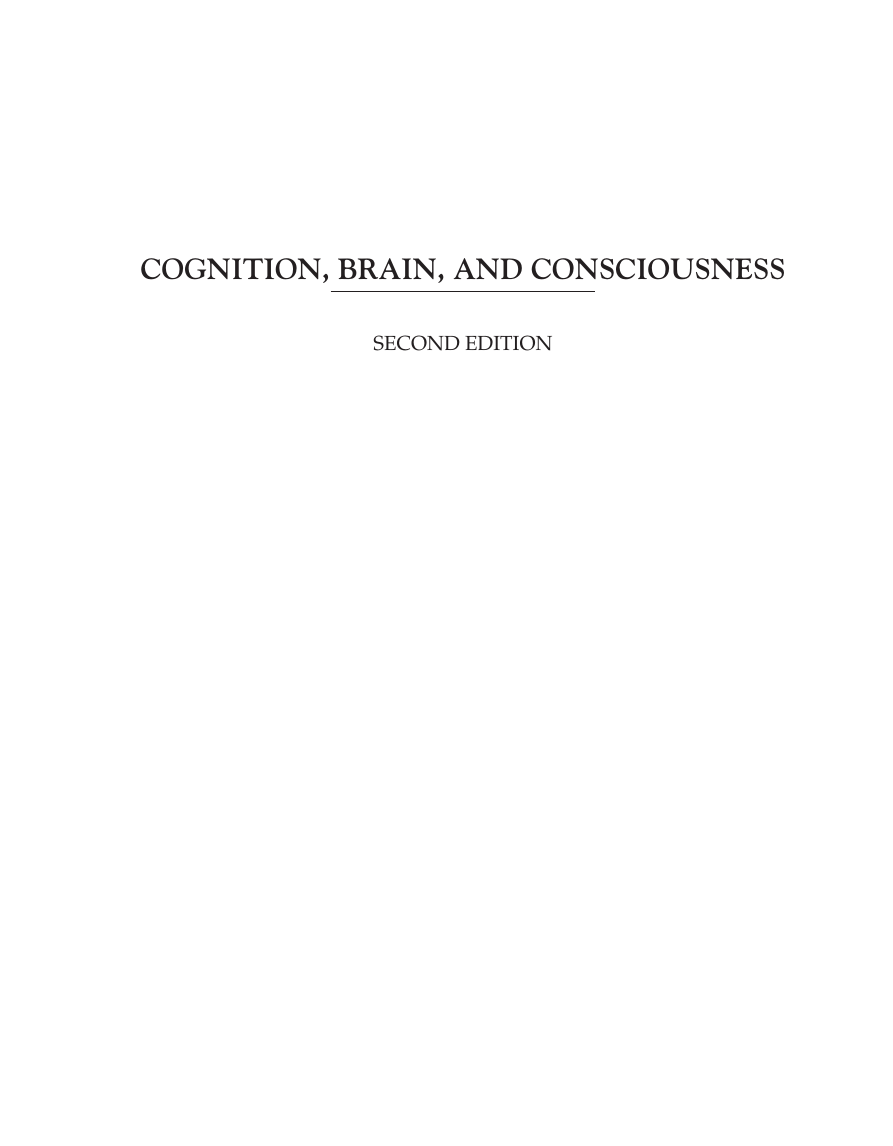

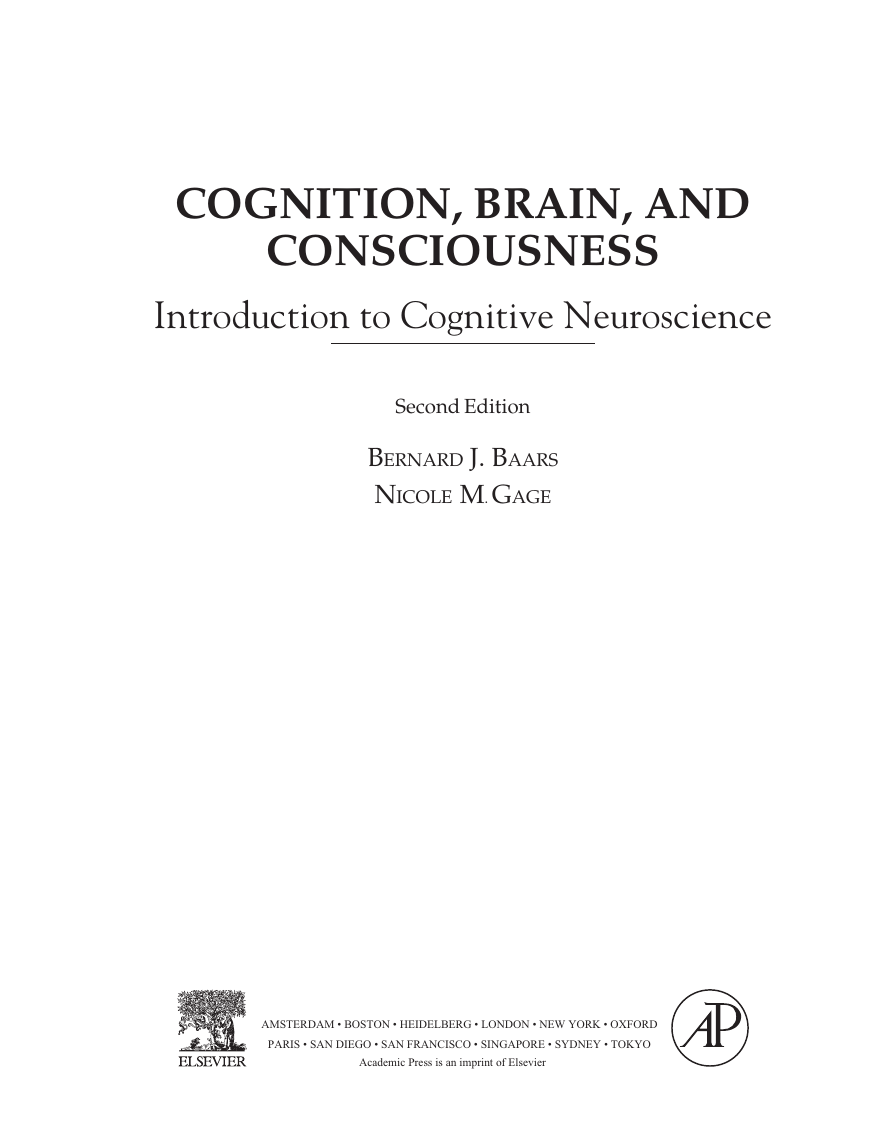
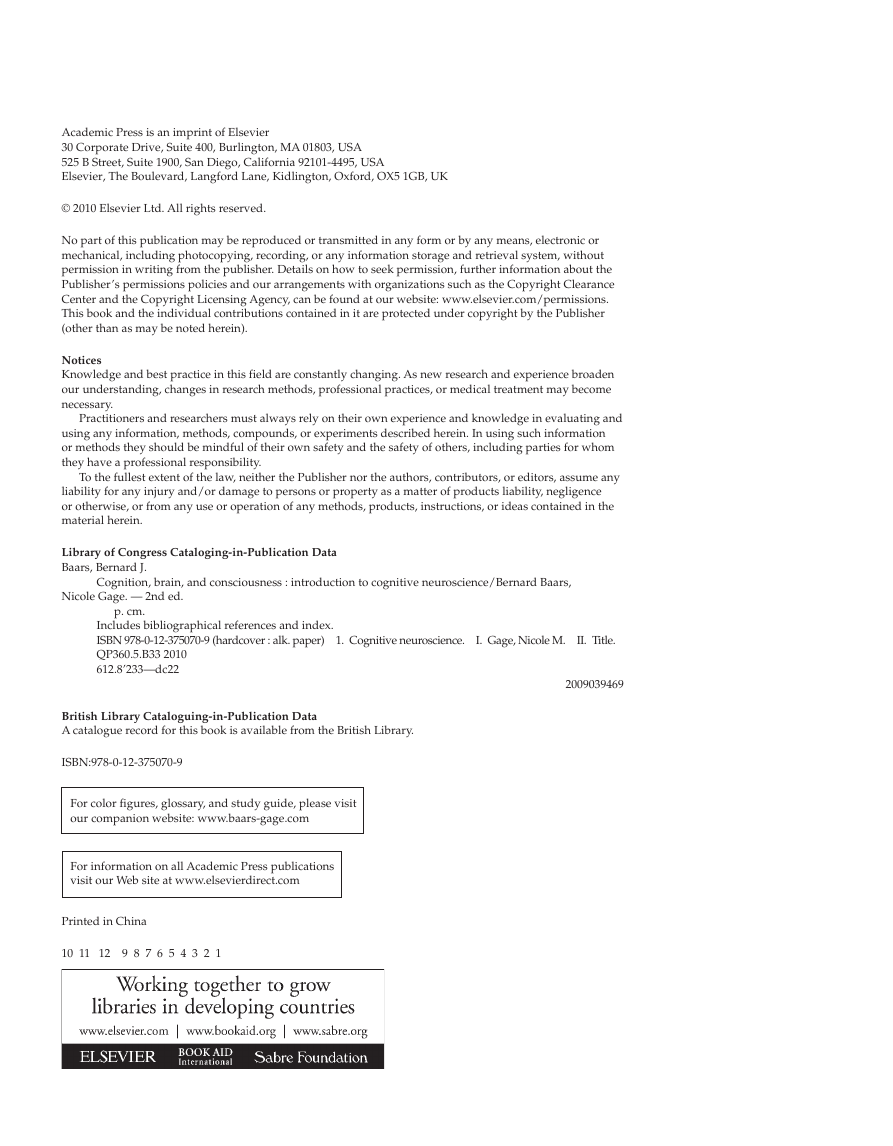
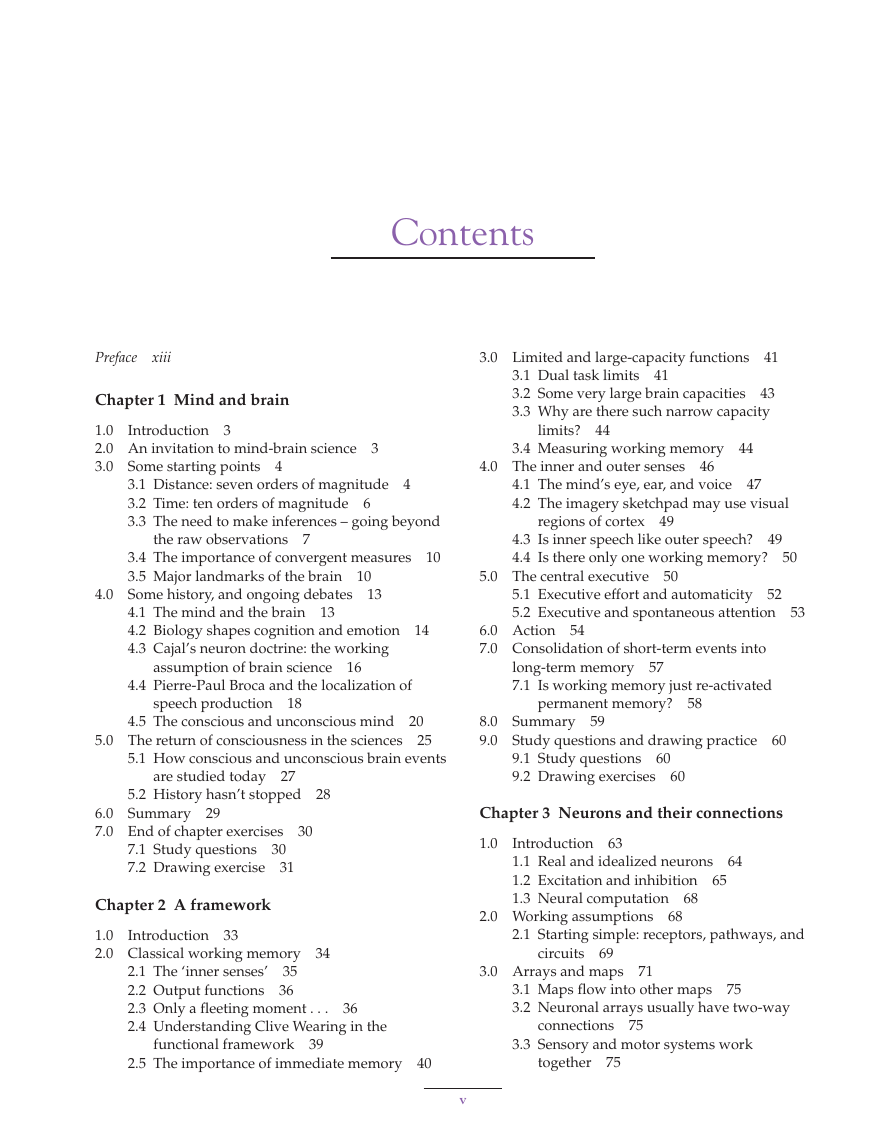
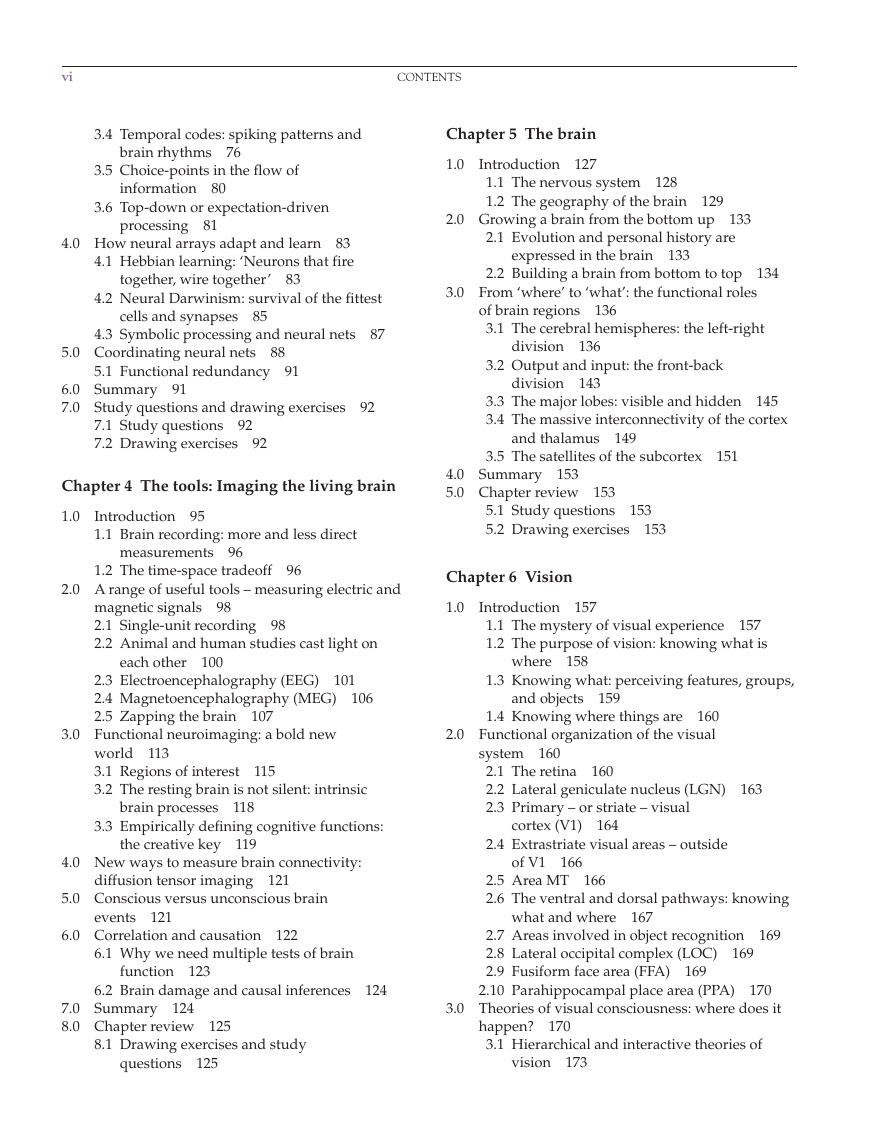









 2023年江西萍乡中考道德与法治真题及答案.doc
2023年江西萍乡中考道德与法治真题及答案.doc 2012年重庆南川中考生物真题及答案.doc
2012年重庆南川中考生物真题及答案.doc 2013年江西师范大学地理学综合及文艺理论基础考研真题.doc
2013年江西师范大学地理学综合及文艺理论基础考研真题.doc 2020年四川甘孜小升初语文真题及答案I卷.doc
2020年四川甘孜小升初语文真题及答案I卷.doc 2020年注册岩土工程师专业基础考试真题及答案.doc
2020年注册岩土工程师专业基础考试真题及答案.doc 2023-2024学年福建省厦门市九年级上学期数学月考试题及答案.doc
2023-2024学年福建省厦门市九年级上学期数学月考试题及答案.doc 2021-2022学年辽宁省沈阳市大东区九年级上学期语文期末试题及答案.doc
2021-2022学年辽宁省沈阳市大东区九年级上学期语文期末试题及答案.doc 2022-2023学年北京东城区初三第一学期物理期末试卷及答案.doc
2022-2023学年北京东城区初三第一学期物理期末试卷及答案.doc 2018上半年江西教师资格初中地理学科知识与教学能力真题及答案.doc
2018上半年江西教师资格初中地理学科知识与教学能力真题及答案.doc 2012年河北国家公务员申论考试真题及答案-省级.doc
2012年河北国家公务员申论考试真题及答案-省级.doc 2020-2021学年江苏省扬州市江都区邵樊片九年级上学期数学第一次质量检测试题及答案.doc
2020-2021学年江苏省扬州市江都区邵樊片九年级上学期数学第一次质量检测试题及答案.doc 2022下半年黑龙江教师资格证中学综合素质真题及答案.doc
2022下半年黑龙江教师资格证中学综合素质真题及答案.doc